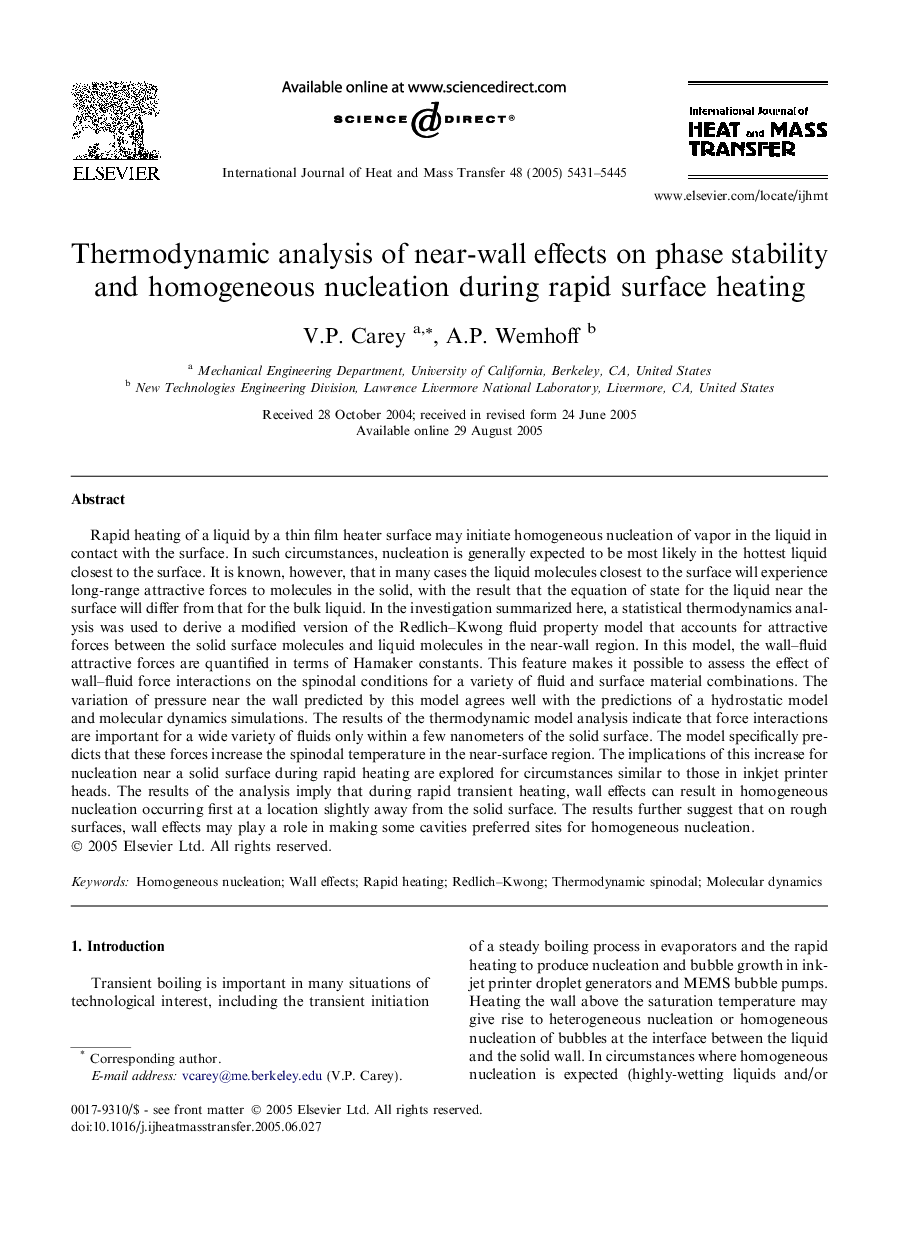| کد مقاله | کد نشریه | سال انتشار | مقاله انگلیسی | نسخه تمام متن |
|---|---|---|---|---|
| 662600 | 1458179 | 2005 | 15 صفحه PDF | دانلود رایگان |

Rapid heating of a liquid by a thin film heater surface may initiate homogeneous nucleation of vapor in the liquid in contact with the surface. In such circumstances, nucleation is generally expected to be most likely in the hottest liquid closest to the surface. It is known, however, that in many cases the liquid molecules closest to the surface will experience long-range attractive forces to molecules in the solid, with the result that the equation of state for the liquid near the surface will differ from that for the bulk liquid. In the investigation summarized here, a statistical thermodynamics analysis was used to derive a modified version of the Redlich–Kwong fluid property model that accounts for attractive forces between the solid surface molecules and liquid molecules in the near-wall region. In this model, the wall–fluid attractive forces are quantified in terms of Hamaker constants. This feature makes it possible to assess the effect of wall–fluid force interactions on the spinodal conditions for a variety of fluid and surface material combinations. The variation of pressure near the wall predicted by this model agrees well with the predictions of a hydrostatic model and molecular dynamics simulations. The results of the thermodynamic model analysis indicate that force interactions are important for a wide variety of fluids only within a few nanometers of the solid surface. The model specifically predicts that these forces increase the spinodal temperature in the near-surface region. The implications of this increase for nucleation near a solid surface during rapid heating are explored for circumstances similar to those in inkjet printer heads. The results of the analysis imply that during rapid transient heating, wall effects can result in homogeneous nucleation occurring first at a location slightly away from the solid surface. The results further suggest that on rough surfaces, wall effects may play a role in making some cavities preferred sites for homogeneous nucleation.
Journal: International Journal of Heat and Mass Transfer - Volume 48, Issues 25–26, December 2005, Pages 5431–5445